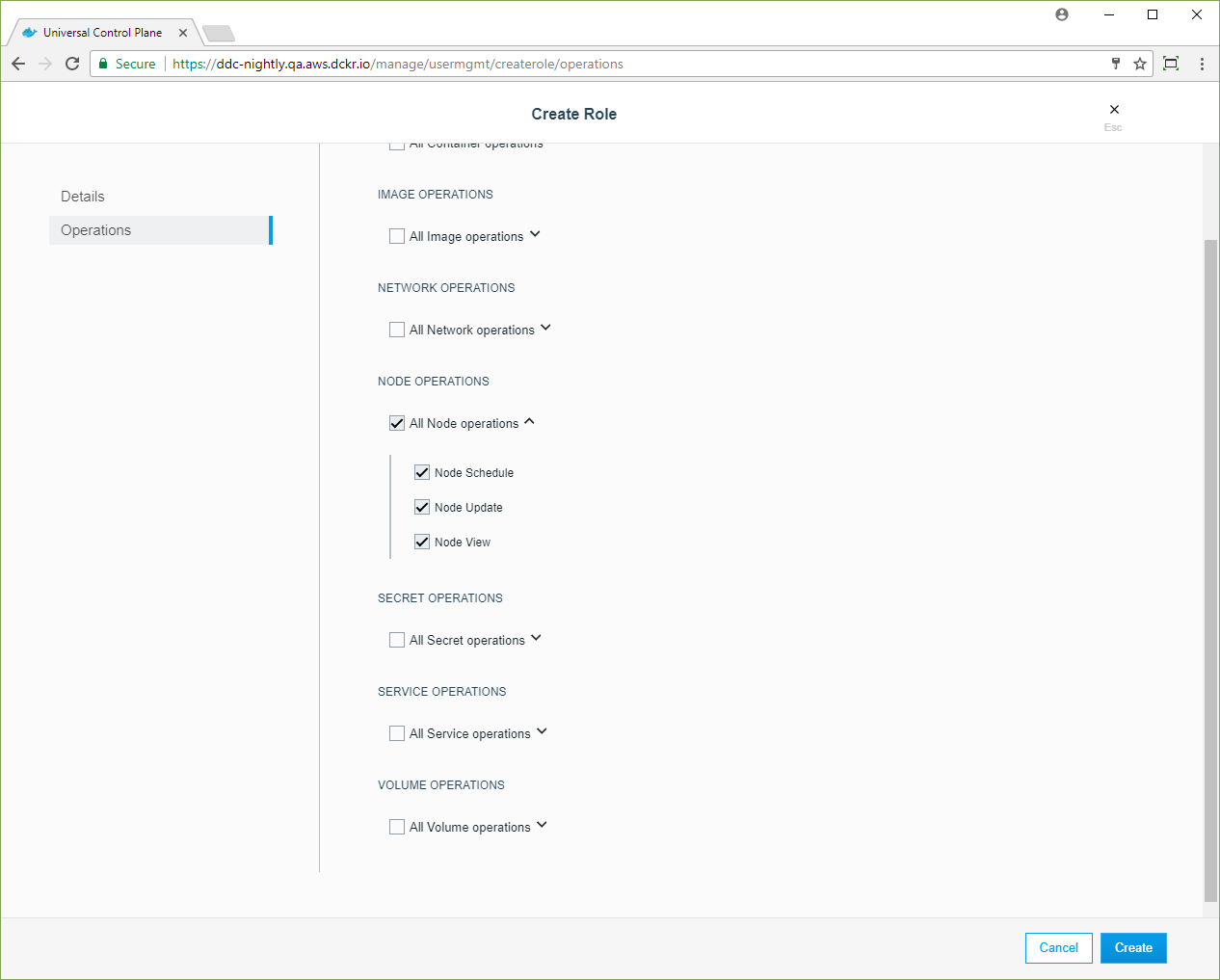Roles and permission levels
Estimated reading time: 3 minutesThese are the docs for UCP version 2.2.4
To select a different version, use the selector below.
Docker Universal Control Plane has two types of users: administrators and regular users. Administrators can make changes to the UCP swarm, while regular users have permissions that range from no access to full control over resources like volumes, networks, images, and containers. Users are grouped into teams and organizations.
Administrators create grants to users, teams, and organizations to give permissions to swarm resources.
Administrator users
In Docker UCP, only users with administrator privileges can make changes to swarm settings. This includes:
- Managing user permissions by creating grants.
- Managing swarm configurations, like adding and removing nodes.
Roles
A role is a set of permitted API operations on a collection that you can assign to a specific user, team, or organization by using a grant.
UCP administrators view and manage roles by navigating to the Roles page.
The system provides the following default roles:
| Built-in role | Description |
|---|---|
None |
The user has no access to swarm resources. This maps to the No Access role in UCP 2.1.x. |
View Only |
The user can view resources like services, volumes, and networks but can’t create them. |
Restricted Control |
The user can view and edit volumes, networks, and images but can’t run a service or container in a way that might affect the node where it’s running. The user can’t mount a node directory and can’t exec into containers. Also, The user can’t run containers in privileged mode or with additional kernel capabilities. |
Scheduler |
The user can view nodes and schedule workloads on them. Worker nodes and manager nodes are affected by Scheduler grants. Having Scheduler access doesn’t allow the user to view workloads on these nodes. They need the appropriate resource permissions, like Container View. By default, all users get a grant with the Scheduler role against the /Shared collection. |
Full Control |
The user can view and edit volumes, networks, and images, They can create containers without any restriction, but can’t see other users’ containers. |
Administrators can create a custom role that has Docker API permissions that specify the API actions that a subject may perform.
The Roles page lists the available roles, including the default roles
and any custom roles that administrators have created. In the Roles
list, click a role to see the API operations that it uses. For example, the
Scheduler role has two of the node operations, Schedule and View.
Create a custom role
Click Create role to create a custom role and define the API operations
that it uses. When you create a custom role, all of the APIs that you can use
are listed on the Create Role page. For example, you can create a custom
role that uses the node operations, Schedule, Update, and View, and you
might give it a name like “Node Operator”.

You can give a role a global name, like “Remove Images”, which might enable the Remove and Force Remove operations for images. You can apply a role with the same name to different collections.
Only an administrator can create and remove roles. Roles are always enabled. Roles can’t be edited, so to change a role’s API operations, you must delete it and create it again.
You can’t delete a custom role if it’s used in a grant. You must first delete the grants that use the role.
Where to go next
- Create and manage users
- Create and manage teams
- Docker Reference Architecture: Securing Docker EE and Security Best Practices

